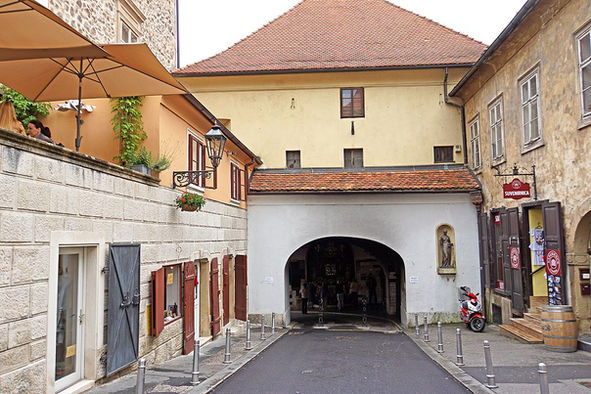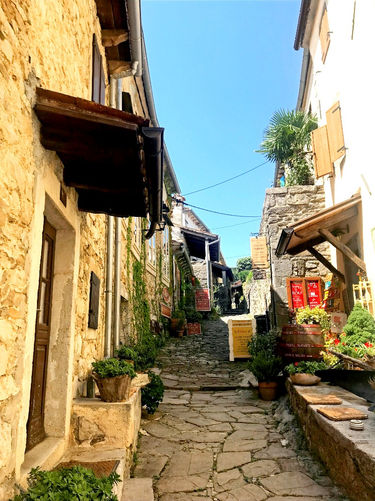

Welcome to
CROATIA


Offical Name: Republika Hrvatska (Republic of Croatia )
Capital: Zagreb
Form of Government: Parliamentary Democracy
Currency: Kuna Croata (HRK)
Area: 55,960 km²
Populations: 4.2 million
Other cities: Dubrovnik, Split, Zadar, Pula, Rovinj, Opatija
Ancient cities, evergreen forests, sparkling lakes, long stretches of sweeping beaches, rocky coves, quaint villages, enchanting castles and unspoilt nature are some of Croatia's top attractions.
Zagreb
Zagreb, the vibrant capital city of Croatia, is home to some of the country's best museums, galleries, markets, restaurants, and shopping.
Plitvice Lakes National Park
In Croatia's central region, the Plitvice Lakes National Park set in deep woodland forested hillsides, surrounding 16 emerald-blue lakes connected by a succession of thundering waterfalls, was granted UNESCO world heritage status in 1979.
Istrian Peninsula
The largest peninsula in the Adriatic, Istria is one of the most visited tourist destinations in Croatia and the Mediterranean. It enchants you with the beauty of its diversity, from beautiful coast, crystal clear blue sea and picturesque fishing port of the Adriatic to the abundant greenery of pure nature of Istria's hinterland, rolling hills, olive groves, truffle-filled forests and medieval towns.
Hum
Hum located deep in the hinterland of the Istrian peninsula , is known as the smallest town in the world, which is why it is one of the most attractive Istrian excursionist destinations.
Motovun
Motovun, a medieval village perching on a cliff, overlooking vineyards, olive groves and agricultural land, with houses scattered all over the hill.
Opatija
Opatija a vibrant resort where Croatian coastal tourism began, with a history of tourism, dating back more than 150 years.
Pula
Pula is the largest city in Istria County. It is home to some really well-preserved Roman ruins, including the Pula Arena.
Rijeka
Rijeka is the third-largest city in Croatia, after Zagreb and Split. It may not be as popular as other cities in Croatia, but it is a upcoming tourist destination that is worth a visit. In addition to the bonus of having to deal with fewer crowds, you'll be surpirise this long-important port city offers plenty of attractions and things to do.
Rovinj
Located on the western coast of the Istrian peninsula, the Venetian-era seaside town of Rovinj is made up of pastel-colored houses and presided over by a hilltop church with an elegant bell tower. It is a popular tourist resort and an active fishing port.
Dubrovnik
Dubrovnik, Croatia's most glamorous tourist destination, is referred to as the “Pearl of the Adriatic.”It is a UNESCO World Heritage site, surrounded by the medieval defensive walls. Talk a stroll along the walls, learn about the old ramparts, fortresses , towers and cannons along the way. If you watch “Game of Thrones”, you’ll recognise several locations. The views from atop the ramparts are so stunning! Be prepared to take tons of photos!
Sibenik
Although Sibenik is not as busy as other popular destinations within this beautiful country, there's no shortage of great things to do here. In the perfectly-preserved historic Old Town center you'll find the 15th-century Cathedral of St. James (Katedrala Sv Jakova), a UNESCO World Heritage Site and one of the finest churches in all of Croatia, along with numerous elegant 15th and 16th century architecture and attractions that are worth visiting.
Split
Split, Croatia's second biggest city after Zagreb, is famous for Diocletian's Palace, a wonderfully preserved 4th century massive historical complex, that made up half of the Split Old Town. Overlooking the Adriatic Sea, it was built by Roman Emperor Diocletian, who retired here in AD 305.
Ston
Ston, an idyllic village located in the Peljesac Peninsula, is a perfect escape from the hustle and bustle of cities. It is known for its very well preserved 14th century town walls, its salt works, and its oysters!
Trogir
Trogir sits on a small island that is connected to the mainland by bridges. A UNESCO site, Trogir looks much the same now as it did in its medieval heyday.
Zadar
Zadar's car-free Old Town is built on a small peninsula jutting out onto Croatia's Dalmatian coast. The Land Gate is the main entrance to the Old Town.

By Seanpu1 - wikimedia.org, CC BY-SA 3.0
It is a beautiful country and certainly well worth visiting for its scenery, culture, sights, beautiful coastline and more….You may include a visit to the historic
Bosnia-Herzegovina or Slovenia.
The perfect escape for you!
Let us assist you to create an unforgettable memory for your next trip.
Simply drop us an email with your tour request and expect our prompt response for your tailor-made quotation based on your needs and expectations!





































































































